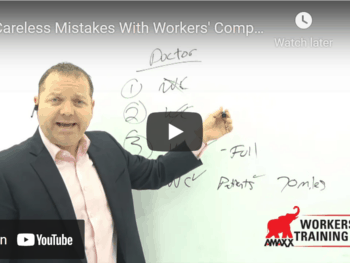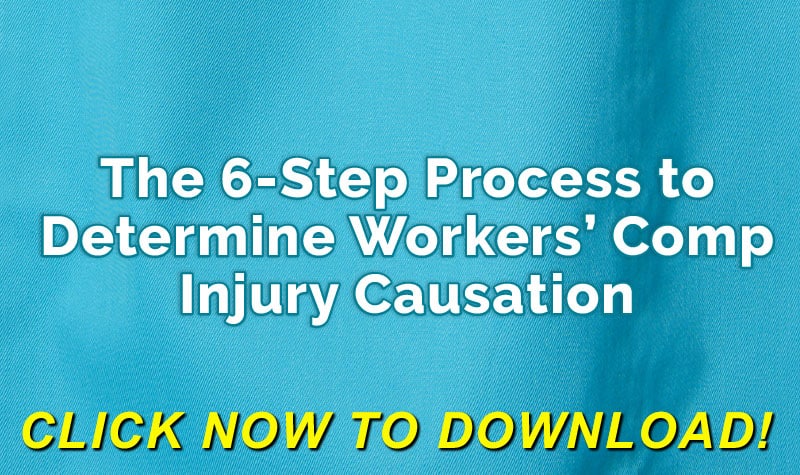
Workers’ compensation payers spend anywhere from $20,591 to $123,276 for a rotator cuff injury, according to ODG guidelines. Additionally, the number of disability days can range from 73 in best-case scenarios to as many as 393. Such wide swings make it nearly impossible to accurately reserve and plan for one of the most common ailments among injured workers. Still, a strategy used in group health may provide a solution.
Episodic Care Management (ECM)
While chronic medical conditions may incur unexpected treatments and costs, others, such as soft tissue injuries, have a clear beginning and end. The latest data and research can be used to help stakeholders determine the most appropriate care, the length of time it should take, and a fixed price—leading to better outcomes for injured workers as well as payers.
“It’s a shift in how we think about care delivery in workers’ compensation,” explained Kevin Turner, Chief Clinical Solutions Officer at Paradigm. “Episodic care management … it’s in group health, and we think it can work in workers’ compensation.”
Episodic care management is a value-focused approach used to diagnose and treat a condition or injury by bundling all services associated with treatment into a single patient experience, often for a fixed payment. Turner and other advocates explained the concept during a session at the 2021 National Comp conference.
Episodic Care Management vs. Traditional Model
Typically, medical providers who treat injured workers are paid under a fee-for-service model, where each provider or medical facility is paid independently of one another. The stakeholders involved in the injured worker’s care—including the medical providers—typically don’t interact. This model leads to what ECM advocates say is a fragmented approach to medical care for injured workers—and leads to the wide variations in costs and outcomes.
On the other hand, episodic care management bundles the medical services of an event from start to finish. What allows it to work effectively is the integrated approach taken. Everyone involved in the claim collaborates, with the injured worker at the center of the effort.
“Workers’ compensation needs to evolve to the episodic care management model for the benefit of the injured worker and all stakeholders,” said Michael Choo, MD, Paradigm Chief Medical Officer & SVP. “We’re confident it will be moving toward where we need to be in the health care industry, which is providing value care.”
To illustrate how the episodic care management model works, consider the typical treatment path for a shoulder injury under the existing model. An injured worker would often wait about 20 days to see a provider, and possibly one who does not necessarily have expertise in shoulder injuries. Several visits may be required before a diagnosis. The physician may order diagnostic tests, such as an X-ray or MRI—possibly too soon. The quality of the imaging may be poor and need to be repeated.
At this point, physical therapy may be scheduled. However, the injured worker may not have access to transportation and may miss some PT visits. With their pain continuing, the worker is advised to have injections (possibly multiple) outside of treatment guidelines. When that fails to work, surgery is often recommended. If the worker does not have adequate home support, the surgery would likely be performed on an inpatient basis with an overnight stay.
On being discharged from the hospital, the worker is told they will get a sling for their arm in a few days. They leave the hospital with no clear post-op instructions. Among other things, the patient does not realize that any pain they are having is normal after such surgery, so they go to an urgent care facility, where diagnostic imaging tests and provider visits are repeated. With concerns about reinjury, the patient remains out of work.
“This is hypothetical, but typical,” said Kathy Galia, SVP & General Manager at Paradigm Clinical Solutions. “How can we improve this? One way is with episodic care management utilizing condition-specific expertise.”
Episodic care management begins with using high-quality providers, who have specialized by diagnosis and have trained in the continuum of care—from injury, to release to return to work. Instead of the “volume approach” of the fee-for-service model, episodic care management focuses on functional recovery, treats the whole person, and targets specific outcomes.
Collaboration is Key
What allows the episodic care management model to work best is having everyone involved in the claim on the same page throughout the entire process. The focus is on outcomes, and the stakeholders are incentivized to work toward the end result.
Involving and educating the injured worker in decision-making, and aligning on their recovery path has the potential to lead to a much more favorable outcome. “By doing this, injured workers are more engaged in their lives, and tend to have faster recoveries, which can result in lower costs,” Choo said.
Challenges to Episodic Care Management
While advocates highly anticipate the ultimate transition to episodic care management in workers’ compensation, they admit there are still hurdles to overcome. For one thing, medical providers are trained to be paid a fee for their services, and changing to a bundled model may not mirror their traditional financial structure.
Episodic care management is dependent on all stakeholders ascribing to the philosophy that the best care for the injured worker is the goal. Data is a place to start this process.
“I find providers to be very intrigued by this,” Choo said. “Part of the problem why physicians don’t jump on this is because they don’t have benchmarks; they don’t have anyone giving them feedback. If you create a process with two-way communication and give them information on how they are doing and constructive information to help them improve, that goes a long way to get them to adopt these models.”
Summary
Injured workers often face a fragmented recovery journey, which leads to frustrations for them as well as payers. The episodic care management model being used in group health allows for a more value-based approach to care and payment. While there are still steps to take, advocates are optimistic episodic care management is the future of medical care in the workers’ compensation system.

Contact: mstack@reduceyourworkerscomp.com.
Workers’ Comp Roundup Blog: http://blog.reduceyourworkerscomp.com/
©2022 Amaxx LLC. All rights reserved under International Copyright Law.
Do not use this information without independent verification. All state laws vary. You should consult with your insurance broker, attorney, or qualified professional.














 January is Best Time to Understand the Importance of Return to Work
January is Best Time to Understand the Importance of Return to Work
